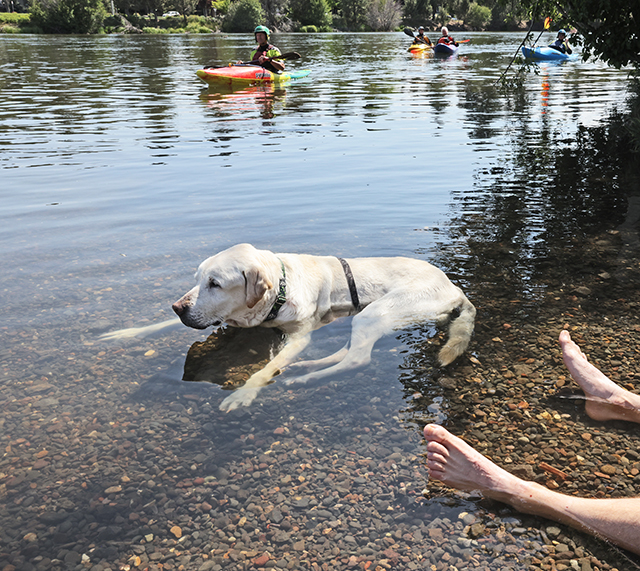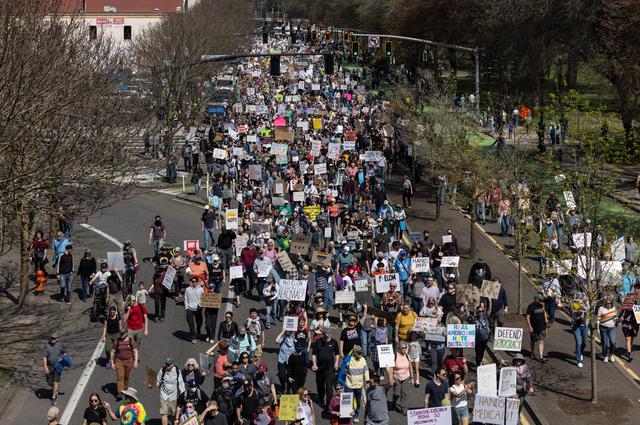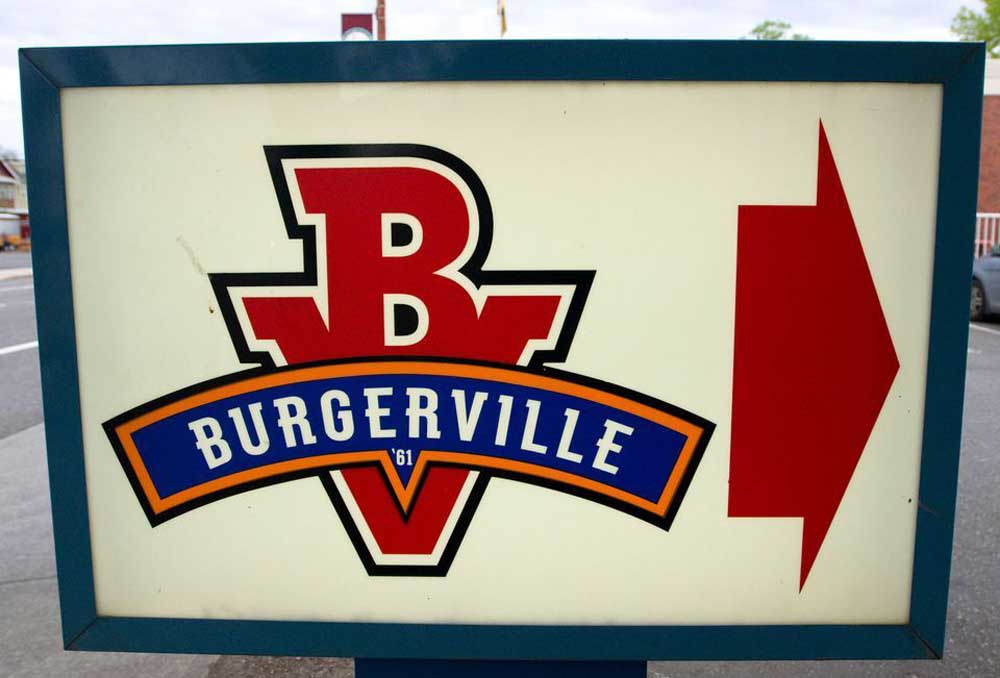Putting the wheels in motion for mobile shops
Published 12:00 am Sunday, November 30, 2014

- Photos by Elizabeth D. Herman / The New York TimesNomad, by Jessie Goldenberg, is a mobile fashion boutique that operates out of a truck. These types of mobile businesses are increasing in cities across the United States as entrepreneurs embrace the lower overhead and freedom to change locations. Goldenberg said operating out of a truck “involved a lower total startup cost and felt a lot less risky.”
NEW YORK — Most weekday mornings, Jessie Goldenberg can be found driving around the Flatiron district or Lower Manhattan searching for just the right parking space for her truck. And Black Friday was no different, as competition for consumer dollars heats up for the holiday season.
While there’s no precise formula to finding a premier spot, Goldenberg said she has learned valuable lessons, including the importance of a corner spot. “We cannot park in the middle of a block because our entrance is through the back,” she said.
Goldenberg owns a mobile boutique, called Nomad, that sells clothing and accessories with what she described as a “wanderlust, bohemian vibe” from a truck. She said it cost her about $70,000 to start the business — considerably less than the $100,000-plus she thinks a traditional storefront would have required.
“I had very briefly considered opening a brick-and-mortar,” Goldenberg said. “But after working at a small boutique in Brooklyn and observing the overhead and seasonal cash flow, I knew it would be too much of a risk for me just starting out. Having the truck involved a lower total startup cost and felt a lot less risky.”
Keeping it mobile
Over the last 10 years, mobile businesses have been on the rise across the country as the economy faltered and aspiring entrepreneurs sought ways to operate businesses for less money.
Much of the rise can be traced to Roy Choi, a chef in Los Angeles who started selling Korean barbecue tacos from a truck in 2008. The popularity of Choi’s tacos is largely credited with being the tipping point for urban food trucks and for spreading the movement around the country.
Matt Geller, a board member of the National Food Truck Association, said that the way food trucks created a natural gathering place for people when clustered together helped demonstrate that mobile was a viable option for selling all kinds of merchandise: flowers, music, art and especially clothing.
Even though temperatures were plunging Wednesday in New York, Goldenberg said her Nomad truck would be open for holiday shopping Friday and into the winter on a limited basis. “We’re going to be out there no matter how cold it is,” she said. “It’s Black Friday, so I’m going to tough it out.”
With many shoppers choosing to spend at large department stores and online to avoid the crowds, Sarah Ellison Lewis, founder of Bootleg Airstream, a mobile shoe store based in Austin, Texas, has opted for a pop-up shop outside of her usual location in hopes of attracting a different audience. “We’re having a huge shoe clearance in a great little historic town outside of Austin for Black Friday and Small Business Saturday, mainly servicing tourists who will be passing through the area.”
Le Fashion Truck, the brainchild of Jeanine Romo and Stacey Steffe, took to the streets of Los Angeles in 2011 and is often credited with being the first successful mobile boutique there, selling local clothes and handmade jewelry. Its startup costs, according to the owners, were less than $20,000.
It features young contemporary clothing with a California style, Steffe said, and she and Romo take their truck to events, private shopping parties and collaborative promotions, including a monthly pop-up at the Los Angeles-Westwood W hotel, where guests are given promotional cards that include a small discount at the truck.
Mobile boutiques also have a growing presence in New York, Houston and the Washington area, according to the American Mobile Retail Association.
“The future of mobile retail is going to be very diverse,” Lewis said. “It’s an amazing way to reach people in a memorable form, and it’s a sustainable business model.”
Lewis said she had lower overhead expenses than most traditional stores and reached $100,000 in revenue in her first year.
Breaking down the costs
Average startup costs for mobile boutiques, according to Steffe, who is a co-founder and president of the mobile retail association, generally run from $20,000 to $30,000, based on expenses for a used truck, interior and exterior upgrades and inventory. She said the average truck carried $2,000 to $3,000 a month in overhead costs, including gas and insurance.
Romo of Le Fashion Truck, who also acts as a consultant for other truck owners, says it takes mobile businesses one to two years, on average, to break even.
The success of mobile stores can produce resentment from bricks-and-mortar businesses that sometimes see mobile stores as competitors that are not necessarily required to comply with the same regulations traditional businesses face.
“When I started, we did get a little bit of tension from brick-and-mortar stores,” said Abby Franklin, the owner of the Trunk boutique in Nashville, Tennessee, whose truck design is inspired by the old-fashioned wagon of a traveling medicine man. “The hardest part was educating the community that it was a local small business, not someone from out of town. My favorite piece of advice was, ‘You are ahead of your time with the truck. Hold on and the rest of Nashville will catch up.’”
While acknowledging the tension, Mike Gatti, senior vice president for member relations at the National Retail Federation, said bricks-and-mortar owners stood to gain from the rise of mobile retailing.
“It creates another competitor,” he said, “but what we’re seeing is that a lot of them are buying into it now because they are seeing a benefit. For example, a customer might buy something in a truck and then walk into a brick-and-mortar location and find something that complements the purchase. I wouldn’t be surprised if the big brands start doing it themselves. Because it’s a great way to bring what you’ve got in your store to a new neighborhood to test it in a new market.”
Obstacles
As temperatures drop, weather is another challenge for truck owners. Last year, Goldenberg closed her truck during the winter, which allowed her to focus on branding and, in the spring, to introduce an e-commerce site that broadened her consumer base beyond New York City.
“I instantly learned that I have overlooked how much work goes into setting up a functioning online store,” she said, adding that while it was too early to gauge the online store’s success, she was working on increasing its inventory and improving the site.
Regardless of the season, parking is always an issue. In Nashville, Franklin said she had success in the small shopping district of Hillsboro Village near other boutiques.
“I don’t really park anywhere you need to feed the meter,” she said. “I try to park in a business parking lot or at an event. I will pay a fee to the business owners to park on their property.”
The rules differ by city, and boutique owners are often subject to changing regulations, making it tricky for mobile businesses to move from one jurisdiction to another.
Legislation
In California, a bill sponsored by Rob Bonta, a Democratic state assemblyman, that was intended to standardize the process for licensing mobile retailers across the state passed the Legislature but was vetoed by Gov. Jerry Brown. The mobile retail association, Steffe said, would like to see more statewide legislation across the country to simplify and standardize regulations.
Some owners, like Franklin, are finding a middle ground by having both a mobile truck and a bricks-and-mortar store — even if, for some, the truck is more of a marketing tool than a big component of sales.
Of the two, Franklin said, the mobile boutique actually had higher startup costs, with the truck costing $35,000 to get up and running in contrast to the $10,000 she invested in a microretail location, which she is planning to expand. But she said the monthly costs of the shop were much greater than those of the truck. “Having them is like the best of both worlds. When the truck can’t go out, we still have a way to sell stuff,” she said.
She still considers the truck her main business, which she said earned almost double the profit of her bricks-and-mortar store. In terms of revenue, she said, “We are on track to make between $175,000 and $200,000 between both.”
Despite the challenges, Goldenberg said she simply enjoyed life on the road. “I’m putting every dime possible back into the business,” she said. “I took out loans and credit cards to get Nomad rolling, and while I’m still paying those off, I’m off to a pretty good start.”






